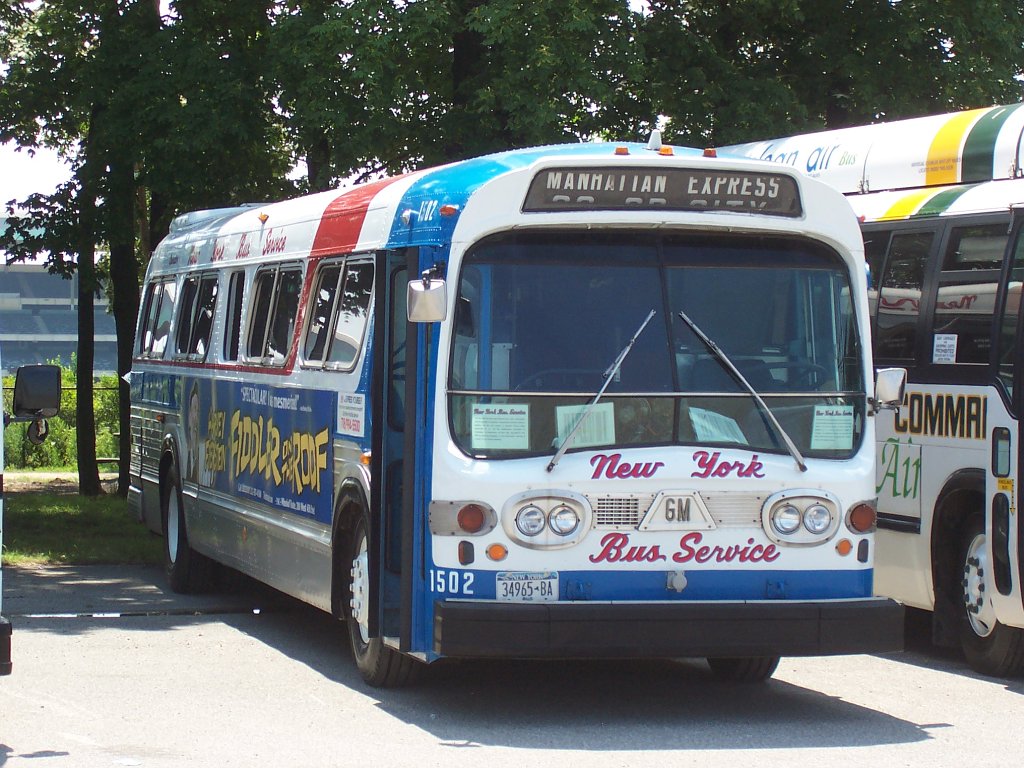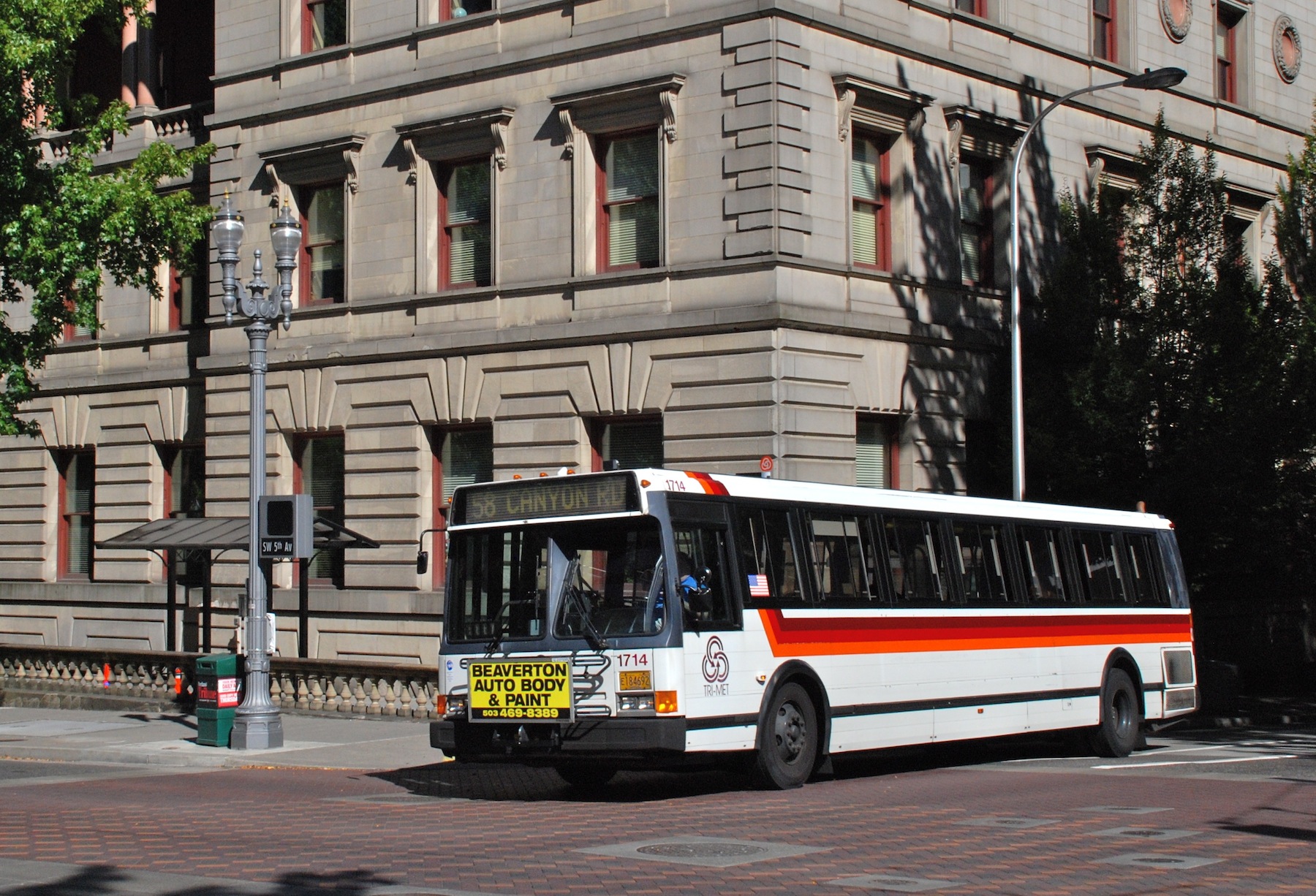|
Allison V730
{{one source, date=April 2019 The Allison V730 is a three-speed automatic transmission used in several makes of transit bus including the RTS, Canadian-produced Classic buses derived from the GM New Look The GM New Look bus is a municipal transit bus that was introduced in 1959 by the Truck and Coach Division of General Motors to replace the company's previous coach, retroactively known as the GM "old-look" transit bus. Also commonly known by ..., and Grumman Flxibles. Later production buses in the GM and Flxible line had the Allison V731 transmission, which is essentially the same unit but controlled electronically, with a keypad replacing the familiar shifter-lever in the driver's compartment. The Allison V730/V731 family transmissions moreover come in versions with a built-in retarder (the VR731), and a version allowing transit agencies and others to use right-turning Detroit Diesel family motors (variously the V731R or V731RH) instead of the standard left-turning units ... [...More Info...] [...Related Items...] OR: [Wikipedia] [Google] [Baidu] |
Allison Transmission
Allison Transmission is an American manufacturer of commercial duty automatic transmissions and hybrid propulsion systems. Allison products are specified by over 250 vehicle manufacturers and are used in many market sectors including bus, refuse, fire, construction, distribution, military, and specialty applications. With headquarters in Indianapolis, Indiana, Allison Transmission has regional offices all over the world and manufacturing facilities in Indianapolis, Chennai, India, and Szentgotthárd, Hungary. History Racing team Allison began in 1909 when James A. Allison, along with three business partners, helped fund and build the Indianapolis Motor Speedway. In 1911, Allison's new track held the first Indianapolis 500 mile race. In addition to funding several race teams, James Allison founded the Speedway Racing Team Company on September 14, 1915 and quickly gained a reputation for his work on race cars and automotive technology in general. Allison built a shop near the tra ... [...More Info...] [...Related Items...] OR: [Wikipedia] [Google] [Baidu] |
Automatic Transmission
An automatic transmission (sometimes abbreviated to auto or AT) is a multi-speed transmission used in internal combustion engine-based motor vehicles that does not require any input from the driver to change forward gears under normal driving conditions. It typically includes a transmission, axle, and differential in one integrated assembly, thus technically becoming a transaxle. The most common type of automatic transmission is the hydraulic automatic, which uses a planetary gearset, hydraulic controls, and a torque converter. Other types of automatic transmissions include continuously variable transmissions (CVT), automated manual transmissions (AMT), and dual-clutch transmissions (DCT). An electronic automatic transmission (EAT) may also be called an electronically controlled transmission (ECT), or electronic automatic transaxle (EATX). A hydraulic automatic transmission may also colloquially called a " slushbox" or simply a "torque converter", although the latter term c ... [...More Info...] [...Related Items...] OR: [Wikipedia] [Google] [Baidu] |
Rapid Transit Series
The Rapid Transit Series (RTS) city bus is a long-running series of transit buses that was originally manufactured by GMC Truck and Coach Division during 1977, in Pontiac, Michigan. First produced in 1977, the RTS was GMC's offering of an Advanced Design Bus design (the other entry was the Grumman 870 by competitor Flxible) and is the descendant of GMC's prototype for the U.S. Department of Transportation's Transbus project. The RTS is notable for its then-futuristic styling featuring automobile-like curved body and window panels; the Advanced Design Buses were meant to be an interim solution between the high-floor transit buses that preceded them, such as the GMC New Look (which had a curved windshield, but flat side glass and body panels), and modern low-floor buses that would facilitate passenger boarding and accessibility. Most current buses are now made by specialized coach manufacturers with flat sides and windows. Production of the RTS transitioned from GM to Motor Coach ... [...More Info...] [...Related Items...] OR: [Wikipedia] [Google] [Baidu] |
Classic (transit Bus)
The Classic was a single-deck bus developed by General Motors Diesel from its previous-generation GM New Look bus, New Look design. The "Classic" was nearly identical to the New Look from the belt rail up, but sported a new front which allowed for a wider front door. The design was originally intended solely for the Canadian market as an alternative to the unpopular Rapid Transit Series (RTS) but ultimately the Classic, produced from 1982 to 1997, met with widespread success in both Canada and the United States. It was available primarily as a long, wide coach (bus), coach, although 16 long articulated bus, articulated Classics were manufactured. The design was fairly conservative, yet contemporary and less controversial than the RTS. History When GMC (automobile), GMC in the United States decided to replace the New Look with the RTS II series in 1977, they hoped that they would win over operators in both the US and Canada. But the design and the futuristic look turned off most ... [...More Info...] [...Related Items...] OR: [Wikipedia] [Google] [Baidu] |
GM New Look (Fishbowl) Bus
The GM New Look bus is a municipal transit bus that was introduced in 1959 by the Truck and Coach Division of General Motors to replace the company's previous coach, retroactively known as the GM "old-look" transit bus. Also commonly known by the nickname "Fishbowl" (for its original six-piece rounded windshield, later replaced by a two-piece curved pane), it was produced until 1977 in the US, and until 1985 in Canada.Stauss (1988), p. 30. More than 44,000 New Look buses were built. Its high production figures and long service career made it an iconic North American transit bus. The design is listed as by Roland E. Gegoux and William P. Strong. Production overview 44,484 New Look buses were built over the production lifespan, of which 33,413 were built in the U.S. and 11,071 were built in Canada ( GM Diesel Division). Separated by general type, the production figures comprised 510 city buses (all U.S.-built); 9,355 city buses (7,804 U.S.-built, 1,551 Canadian); 31,348 ... [...More Info...] [...Related Items...] OR: [Wikipedia] [Google] [Baidu] |
Flxible Metro
The Flxible Metro is a transit bus that was assembled and manufactured by the Flxible Corporation from 1983 until 1995. From 1978 until early-1983, when Flxible was owned by Grumman, the model was known as the Grumman 870, with a Grumman nameplate. The earlier model 870 experienced a large number of major design defects and deficiencies, some of which led to the filing of lawsuits against the company by purchasers, and the successor "Metro" model addressed those defective design issues. Over the combined 17-year production history, a total of 14,456 were built, of which 4,642 were model 870 and 9,814 were Metros. History Under the ownership of Rohr Industries since 1970, while their very popular Flxible New Look was still in production, Rohr began development of what would become the ''Grumman 870 Advanced Design Bus''. The Grumman 870 bus was one of two advanced-design buses (the other being the Rapid Transit Series (RTS II) developed by rival General Motors and later taken by ... [...More Info...] [...Related Items...] OR: [Wikipedia] [Google] [Baidu] |
Retarder (mechanical Engineering)
A retarder is a device used to augment or replace some of the functions of primary friction-based braking systems, usually on heavy vehicles. Retarders serve to slow vehicles, or maintain a steady speed while traveling down a hill, and help prevent the vehicle from "running away" by accelerating down the hill. They are not usually capable of bringing vehicles to a standstill, as their effectiveness diminishes as vehicle speed lowers. They are usually used as an additional "assistance" to slow vehicles, with the final braking done by a conventional friction braking system. As the friction brake will be used less, particularly at higher speeds, their service life is increased, and since in those vehicles the brakes are air-actuated helps to conserve air pressure too. Friction-based braking systems are susceptible to "brake fade" when used extensively for continuous periods, which can be dangerous if braking performance drops below what is required to stop the vehicle – for ins ... [...More Info...] [...Related Items...] OR: [Wikipedia] [Google] [Baidu] |
Detroit Diesel Series 92
The Detroit Diesel Series 92 is a two-stroke cycle, V-block diesel engine, produced with versions ranging from six to 16 cylinders. Among these, the most popular were the 6V92 and 8V92, which were V6 and V8 configurations of the same engine respectively. The series was introduced in 1974 as a rebored version of its then-popular sister series, the Series 71. Both the Series 71 and Series 92 engines were popularly used in on-highway vehicle applications. History The Series 92 engines were introduced in 1974. Compared to the Series 71 engines they were derived from, the Series 92 featured a larger bore of and an identical stroke of for a nominal displacement per cylinder of , from which the Series 92 derives its name. While the basic mechanics of the 92 series indicated superior performance and durability, early prototypes were challenged by breakdowns resulting from the torque inherent in the design. Carl Kamradt, the senior engineer in Detroit Diesel Allison's E5, or Experimen ... [...More Info...] [...Related Items...] OR: [Wikipedia] [Google] [Baidu] |
Detroit Diesel Series 71
The Detroit Diesel Series 71 is a two-stroke diesel engine series, available in both inline and V configurations, manufactured by Detroit Diesel. The number 71 refers to the nominal displacement per cylinder in cubic inches, a rounding off of . Inline models included one, two, three, four and six cylinders, and the V-types six, eight, 12, 16 and 24 cylinders. The two largest V units used multiple cylinder heads per bank to keep the head size and weight to manageable proportions, the V-16 using four heads from the four-cylinder inline model and the V-24 using four heads from the inline six-cylinder model. This feature also assisted in keeping down the overall cost of these large engines by maintaining parts commonality with the smaller models. History The inline six-cylinder 71 series engine was introduced as the initial flagship product of the Detroit Diesel Engine Division of General Motors in 1938. The V-type first appeared in 1957. Sales of The 71 Series ceased in the ... [...More Info...] [...Related Items...] OR: [Wikipedia] [Google] [Baidu] |


.jpg)



_(41450603320).jpg)